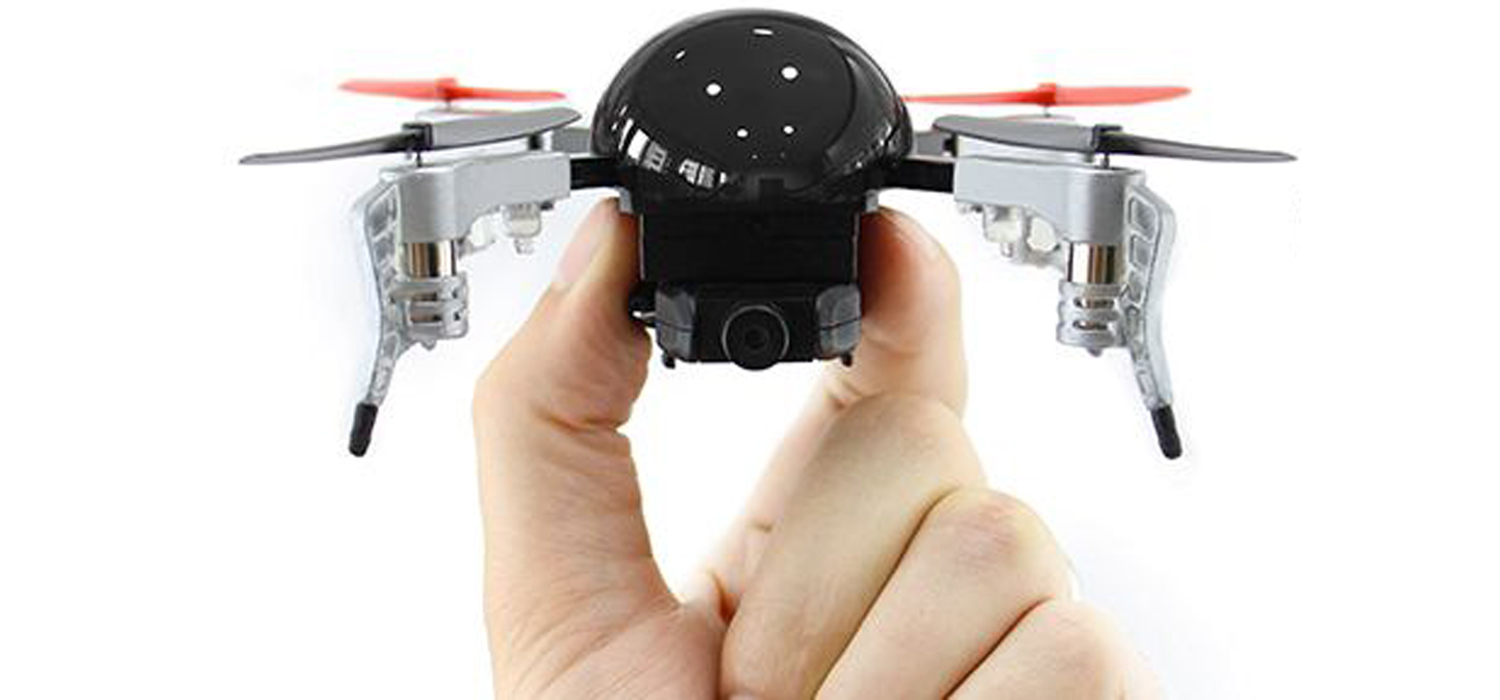Tom's Guide Verdict
Aspiring fliers who want to shoot video will like the Extreme Fliers Micro Drone 3.0, if they can afford it.
Pros
- +
Easy to fly and maneuverable
- +
Shoots good-quality video and images
Cons
- -
Frame is fragile and can bend in a crash
- -
Battery and camera sometimes pop off in a crash and have to be reconnected
- -
App doesn’t always reconnect after crash, and has some rough edges.
Why you can trust Tom's Guide
Crowdfunding sites have been the home of ideas that range from sublime to stupid. Fortunately, the Extreme Fliers Micro Drone 3.0 is a success story, because the result of this $3 million Indiegogo campaign is a simple drone that has some neat features and is fun to fly. It isn’t cheap, though: We looked at the $229 combo pack, which includes the drone, controller, Wi-Fi HD camera and a Google Cardboard FPV viewer. However, a few design issues dampen our enthusiasm.
Design
The Extreme Fliers Micro Drone 3.0 is a simply designed drone, made from a basic X-shaped piece of metal with a plastic dome. The drone measures about 6.5 inches from rotor tip to tip, and weighs in at just 2.5 ounces with battery and camera. The dome covers the drone’s electronics, including the small 550-mAh battery. The motors and rotors are attached to the end of each arm. Beneath each of the motors is a single LED: blue for the front of the drone and white for the back. The rotor blades stick out a lot from the body of the drone, but Extreme Fliers includes a set of blade protectors — lightweight plastic half-circles that clip onto the motor and protect it from harm when you crash.
The 1080 x 720-pixel camera of the Micro Drone 3.0 is a small device about the size of a pack of gum. It clips onto the bottom of the drone body via magnets that connect it to the battery. It shoots video at 30 frames per second, and the video is saved to a microSD card, which fits into the back of the camera body. The slot worked fine with a third-party 32GB microSD card. Alternatively, the Micro Drone app allows you to save video to your phone and upload that to social media sites.
This slightly unusual design has its downsides — you can’t use third-party batteries with this drone, for instance. But there are advantages: You can mount the camera pointing forward or backward, or detach the battery and camera from the drone and use them elsewhere, and there are no loose cables flapping around to get caught.
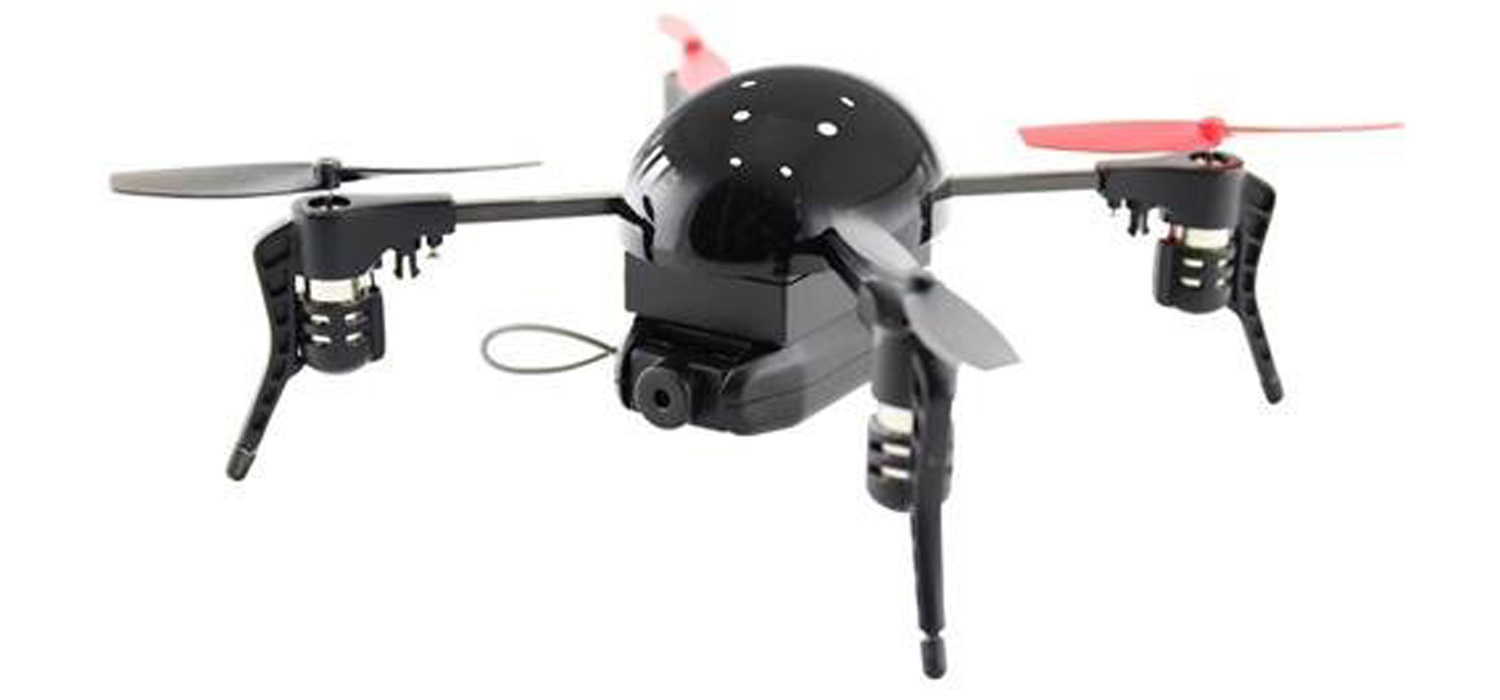
This different design approach also means that the connection between the battery, camera and the body isn’t very strong. In some of the crashes that we had, the battery or camera would pop off and fly away from the drone itself. We never lost them, but it was definitely annoying. The motors also had a habit of coming a little loose in a crash, almost freeing themselves from the retaining clip that holds them in place.
These issues mean that you really need to check the drone over each time you crash. Make sure the battery and camera are reconnected, that the motors aren’t loose and that the app is connected properly. (Crashes can cause the drone to lose connection with your phone should the battery pop loose.)
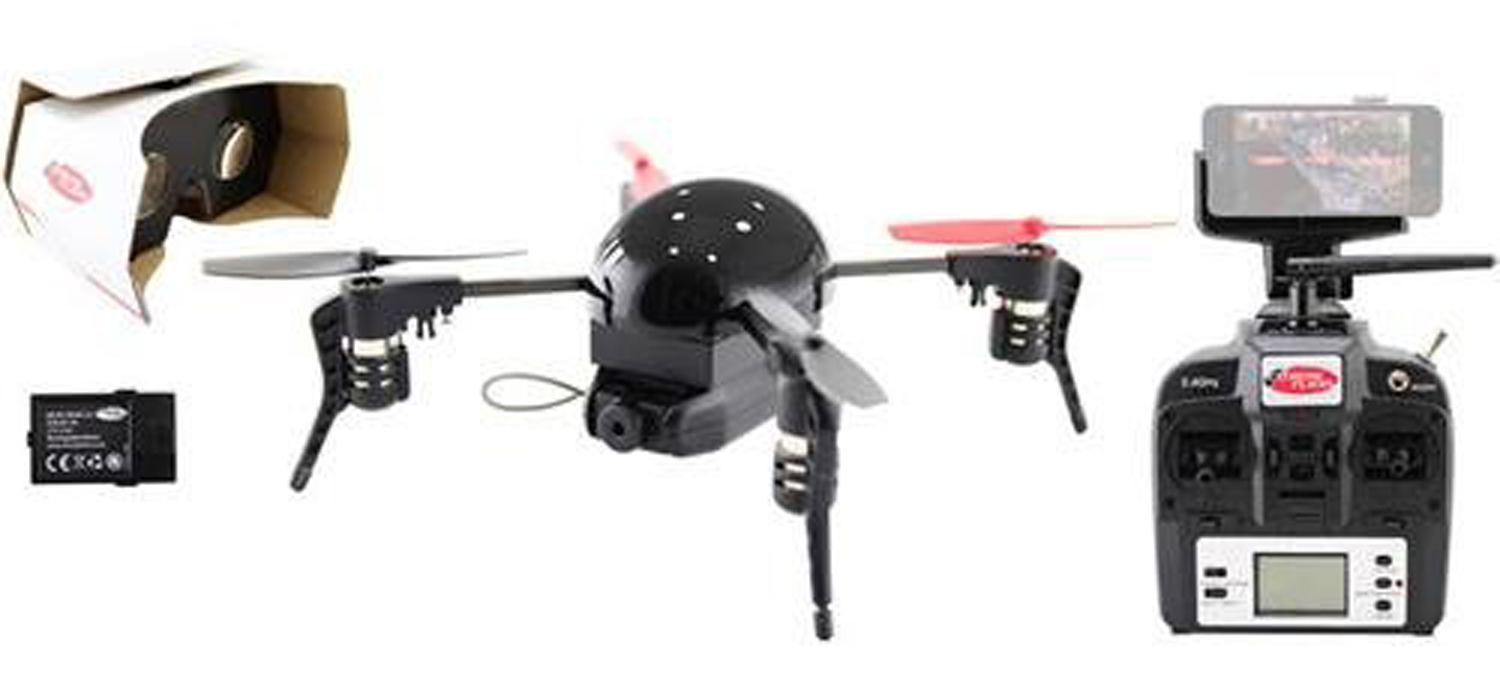
Extreme Fliers is working on a couple of other interesting additions to this design. One is the ability to 3D print custom cases, with the example given being a fun-looking dragon. The other option is a gimbal that protrudes from the bottom of the case, stabilizing the camera as the drone moves. These aren’t available yet, though.
MORE: Drone Buying Guide: Everything You Need to Know
Specs
Rotors: 4 (2 blades per rotor) replaceable, 2.75-inch diameter
Battery Size: 540-mAh Li-ion, removable
Battery Life: 5/5 minutes (claimed/tested)
Camera: 720p video/1280 x 720 still-image resolution
Smartphone Controlled: Yes
FAA Registration: No
Size: 6.5 x 6.5 x 2 inches (rotor tip to rotor tip, height including rotors)
Weight: 2.5 ounces
Controller
There are two ways to control the Extreme Fliers Micro Drone 3.0: from the included controller or from the Micro Drone app running on an iOS or Android device. The controller is a fairly standard, low-cost model that fits nicely into your hand. It features two control sticks that fall under the index finger or thumbs with two switches and three buttons around them; below the sticks is an LCD display.
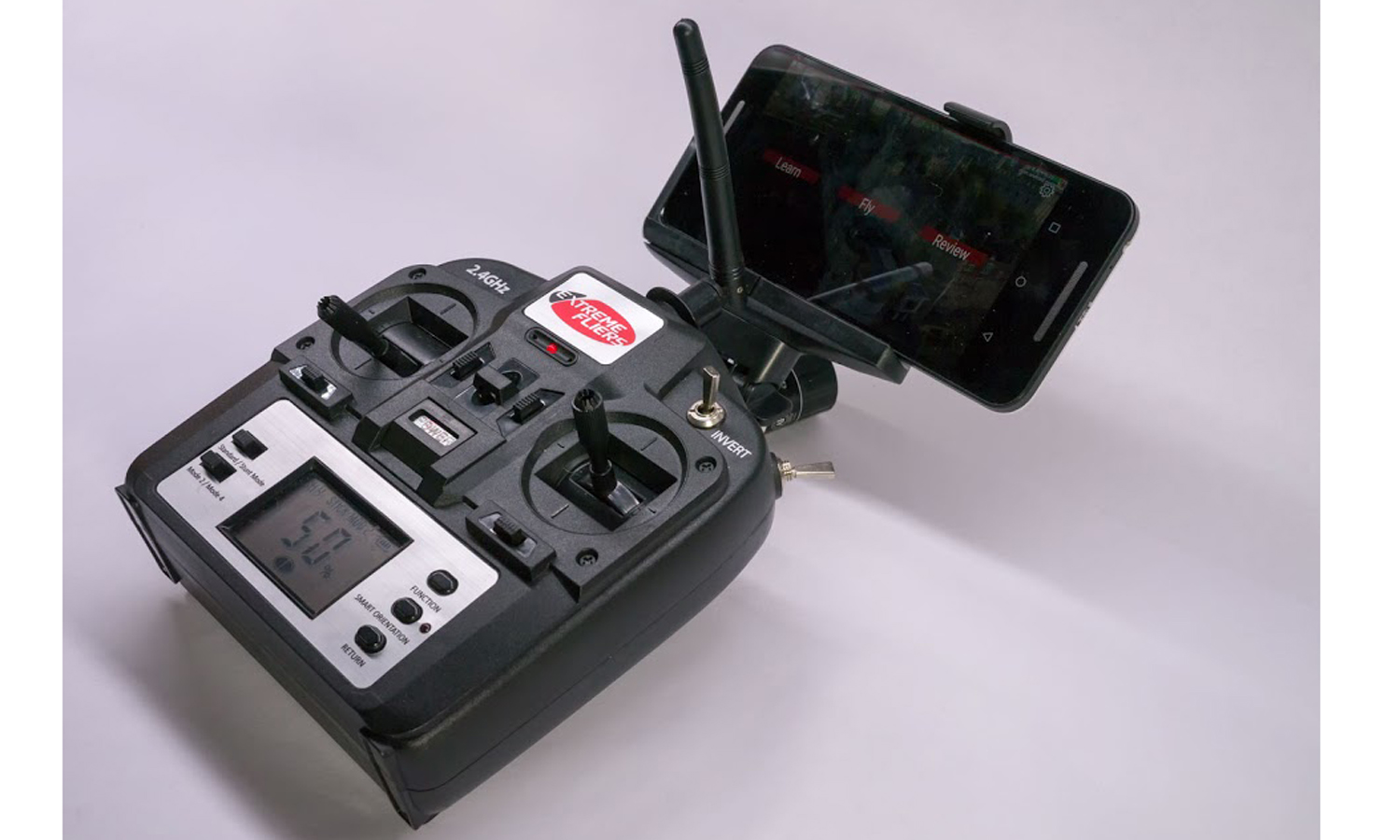
The sticks don’t require much force, which means that they are easy to inadvertently jog, sending the drone spinning out of control. There are also two large switches on the right shoulder: one for the speed control and one for inverted flight.
The switches and buttons on the front of the controller do things like alter what the control sticks do, change the flying mode of the drone and put it into stunt mode. On the top of the controller is a cell phone holder, which can hold any phone (to show a live video feed) up to about 3.5 inches wide (both the Samsung Galaxy S7 and the iPhone 6s are less than 3 inches wide). That means most phones will be fine, but phablets and tablets won’t fit. You need this app to control the video and photo features of the device: there is no way to do this from the controller alone.
You can also control the Micro Drone 3.0 through the app, which offers touch-screen controls similar to the physical control sticks, just overlaid on a preview of the video from the camera. Touch and drag the left control upward, and the drone takes off. On the bottom of the screen are the video controls, one for taking still photos and one for starting and stopping video capture.
If you want to use the app in combination with the controller, you can hide these touch-screen controls, using your phone only for the video preview. The app uses a Wi-Fi connection: the drone creates its own Wi-Fi network and you set the phone manually to join it.
The Extreme Fliers Micro Drone 3.0 is a smart, responsive drone that is fun to fly, with a few interesting tricks up its sleeve.
On both Android and iOS platforms, the phone often lost the Wi-Fi connection when the drone crashed and the battery popped off. We then had to manually find and rejoin the drone Wi-Fi network. We also sometimes had to restart the Micro Drone app on our Android test device (a Nexus 5X) when this happened, as the app didn’t always reconnect to the drone properly after a crash. Extreme Fliers told us that they are aware of this bug and are working on a fix.
Flying
The Extreme Fliers Micro Drone 3.0 is a smart, responsive drone that’s fun to fly, with a few interesting tricks up its sleeve. It is stable in flight and responds quickly to the controls. It is also very maneuverable: It quickly twists and turns, and flies quite fast. The fastest of the speed modes (called “insane”) is especially zippy. The makers claim that it is capable of speeds of up to 45 miles per hour: We clocked it at around 30 mph when flying flat out. It is a little difficult to control at high speeds, though; it took a little time to slow down or turn at those speeds. This small, light drone is also very sensitive to wind: even a slight breeze can push it off course.
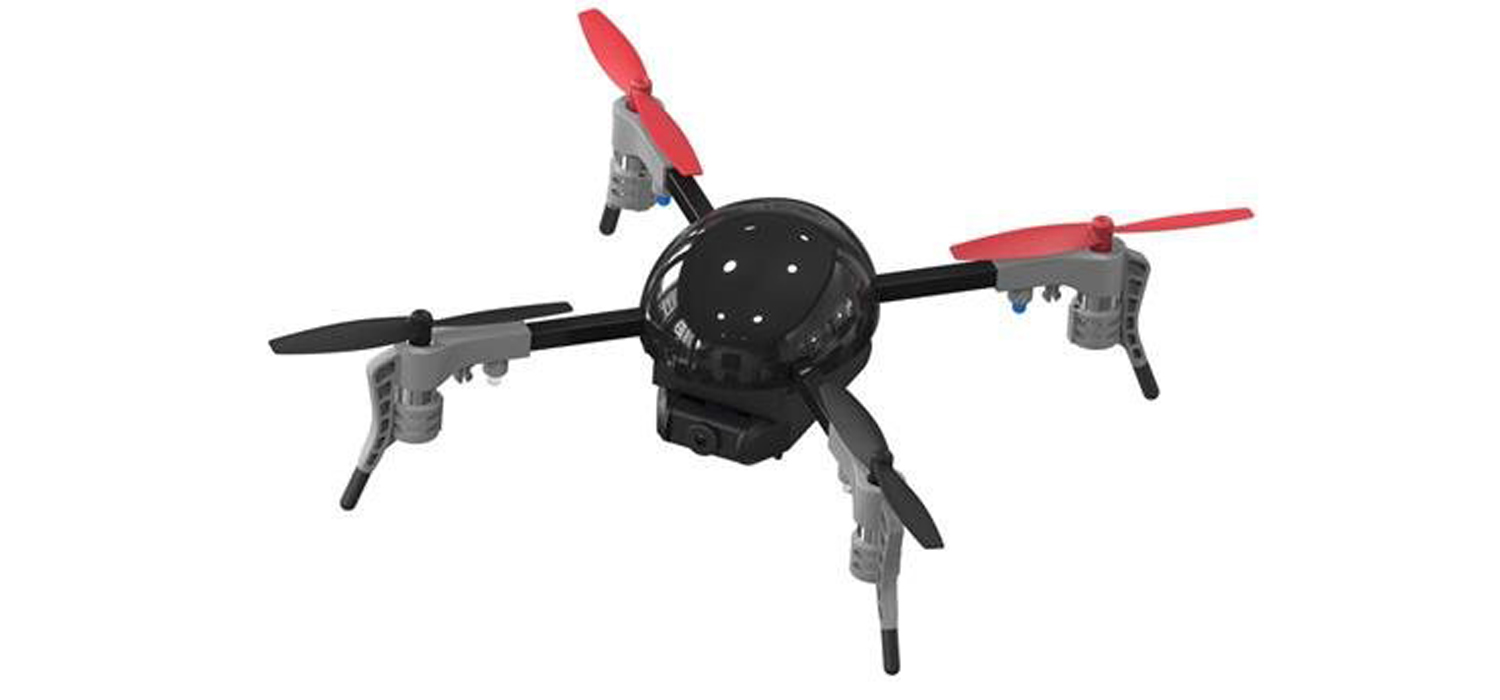
Those who are interested in racing drones may find the First-Person View (FPV) mode interesting. When you activate this mode and put your smartphone into the included Google Cardboard VR headset, you see what the drone sees. It’s an interesting (and sometimes slightly nauseating) experience, especially when the drone is moving and maneuvering fast.
The downside is that you can’t see the controller when you have the headset on, so it’s easy to lose your grip as well as control. Most higher-end FPV headsets don’t completely allow you to see the controller if you look down, but Google Cardboard completely covers your eyes. There is also no strap to hold the Google Cardboard case on your head, so you have to hold it in place with one hand. So, it’s can be a two-person job: one flying, one viewing. Still, it is an interesting way to fly and will definitely give you a feel for drone racing.
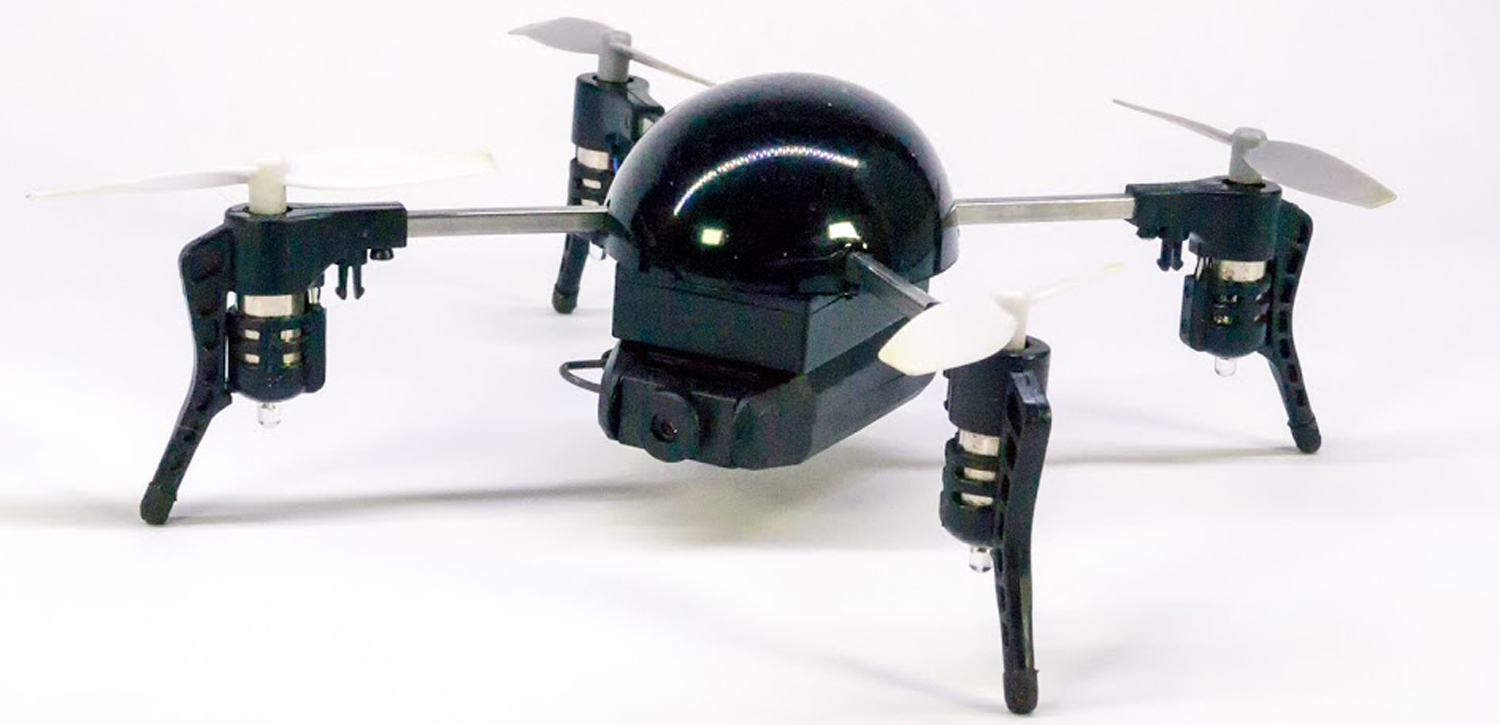
The Micro Drone’s most interesting trick is inverted flight. When you use the special rotor blades, and take off and flip the invert switch on the controller, the drone will flip over and fly upside down. The inverted-flight rotors definitely affect the flight performance: we could not achieve the same speed and maneuverability with them as we could with the standard rotor blades.
Photos & Video
The video I shot with the small camera on the Micro Drone 3.0 looked great, showing plenty of detail. The camera captured movement well, with visible detail in objects near and far as the drone moved at speed, which is important in a quick drone that zooms about. However, the color representation was a bit flat: the grass and ground on my test field looked much duller and less vivid than the real thing. There was also some of the familiar jelly-like shimmering in the video, which was caused by the motors making the camera shake. When I flew near some trees, the branches had a shaky, shimmery look to them.
Overall, the video looks much more attractive than similar cheap drones such as the $109 Hubsan X4. The Micro Drone 3.0's 720p videos showed much better color, detail and clarity. It’s also slightly better than the video of the Skyrocket Toys’ Sky Viper v950HD, with more defined detail and more realistic color. Nearly 2-megapixel still photos were similarly sharp.
MORE: What the FAA's Drone Rules Could Mean for You
Repairability
The Extreme Fliers Micro Drone 3.0 has a modular design, meaning that it’s easy to remove and replace broken parts, including the rotors, arms and frame. That’s a good thing, because the drone is a little fragile.
Drone crashes are inevitable and should ideally be easy to recover from; you should not need to rebuild it and restart the software.
I bent a couple of rotors and one of the arms, and I nearly lost the camera when it popped off and flew away in a crash that would probably not have dented smaller, cheaper models. Two sets of standard rotors and one set of inverted ones are included, and all of the spare parts for the Micro Drone 3.0 are available from Elite Fliers. They are pretty cheap: You can buy the complete drone (minus battery and camera) for $60, or a new set of rotors for $8.The rotors are easy to replace: They pop off easily with the included tool (or a flat-bladed screwdriver) and you can push the new ones onto the motor shaft.
Battery Life
The small, 540-mAh battery of the Micro Drone 3.0 only lasts 5 to 6 minutes on a charge, and takes about 25 to 30 minutes to charge. You can get an extra minute or two if you don’t attach the camera. That’s pretty typical for a small drone of this type — battery life matches that of the UDI U818A. Most inexpensive drones allow you to use cheaper third-party batteries, but the Micro Drone 3.0 doesn’t. Spare batteries from Elite Fliers aren’t that expensive, though, as you can get a battery for $15, and a battery and USB charger for $22.
Bottom Line
The Extreme Fliers Micro Drone 3.0 is a mixed bag. On the upside, it is an easy drone to fly that takes great-quality video. On the downside, it costs twice as much as similar drones, uses proprietary batteries and is more fragile. Drone crashes are inevitable and should ideally be easy to recover from; you should not need to rebuild your drone and restart the software. Kudos to Extreme Fliers for trying some interesting and innovative design and features that might appeal to more experienced fliers, but beginners should look to other drones.
Richard Baguley has been working as a technology writer and journalist since 1993. As well as contributing to Tom's Guide, he writes for Cnet, T3, Wired and many other publications.
